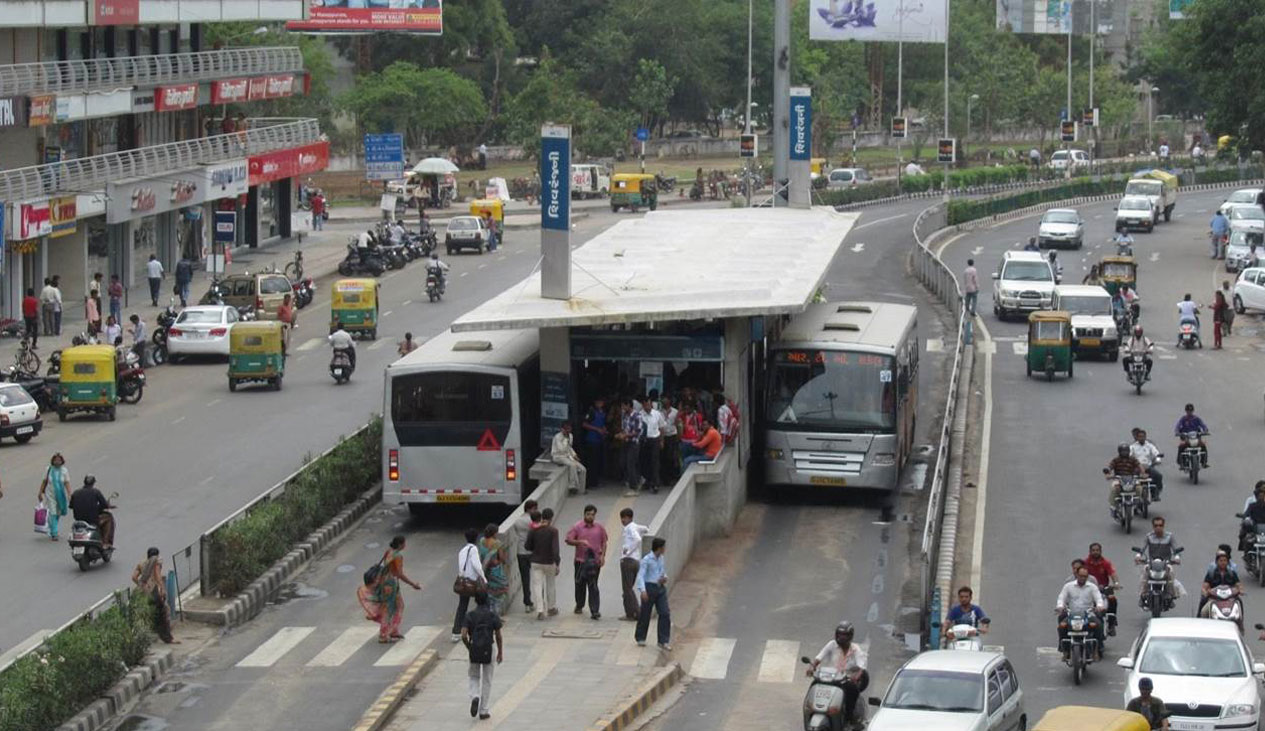by Sam Mohamad-Khany
Pimpri Chinchwad is a city of 1.7 million in the state of Maharashtra, India. On January 5, ITDP conducted a full-day workshop on the BRT Standard, which was attended by over 25 officials from the Pimpri Chinchwad Municipal Corporation (PCMC), public transport operator Pune Mahanagar Parivahan Mahamandal Ltd (PMPML), and consultants Creations Pvt Ltd, S. N. Bhobe, and C. V. Kand, who are preparing detailed designs for new bus rapid transit (BRT) corridors.
Pimpri Chinchwad’s BRT network includes four corridors and spans a total length of 40 km. The goal of the workshop was to inform the BRT planning process by identifying gaps and opportunities for improvement in the current plans for new corridors. Commissioner Shrikar Pardeshi of PCMC opened the session, followed by presentations by ITDP staff on the BRT Standard and salient system features of the Janmarg BRT system in Ahmedabad. Mr Ramkrishna from UMTC, who has been appointed as a project management consultant for the region’s BRT, presented the details of the plan and design. As a warm-up, attendees formed groups and rated the Ahmedabad system using the BRT Standard. In the afternoon, the groups rated the planned BRT lines in their own region. Groups then presented their scores to each other and engaged in lively debate about various opportunities and possible pitfalls of BRT planning and implementation. “We are now aware that what major steps to be taken to upgrade and enhance BRT service in this region,” said Rajan Patil, Joint City Engineer for PCMC.
Workshop participants identified several areas of improvement for the Pimpri Chinchwad BRT corridors, including intersection design, branding and communications, and the provision of adequate pedestrian facilities to enable passengers to reach the future BRT stations. “The workshop conducted by ITDP gave us insight about BRTS element to be incorporated in the design and planning of BRTS for PCMC,” said B. K. Gaikwad, Traffic Engineer, PCMC. “It provided ideas to our engineers, consultants, planners, and operators through discussions in interactive sessions on each of the aspects of the BRTS. Also the importance of pedestrian safety while accessing BRTS has been deliberated during this workshop. Overall, it was very helpful to PCMC.” ITDP will compile recommendations from the groups and follow up with PCMC to facilitate implementation.
The BRT Standard is available for download at www.brtstandard.org.




